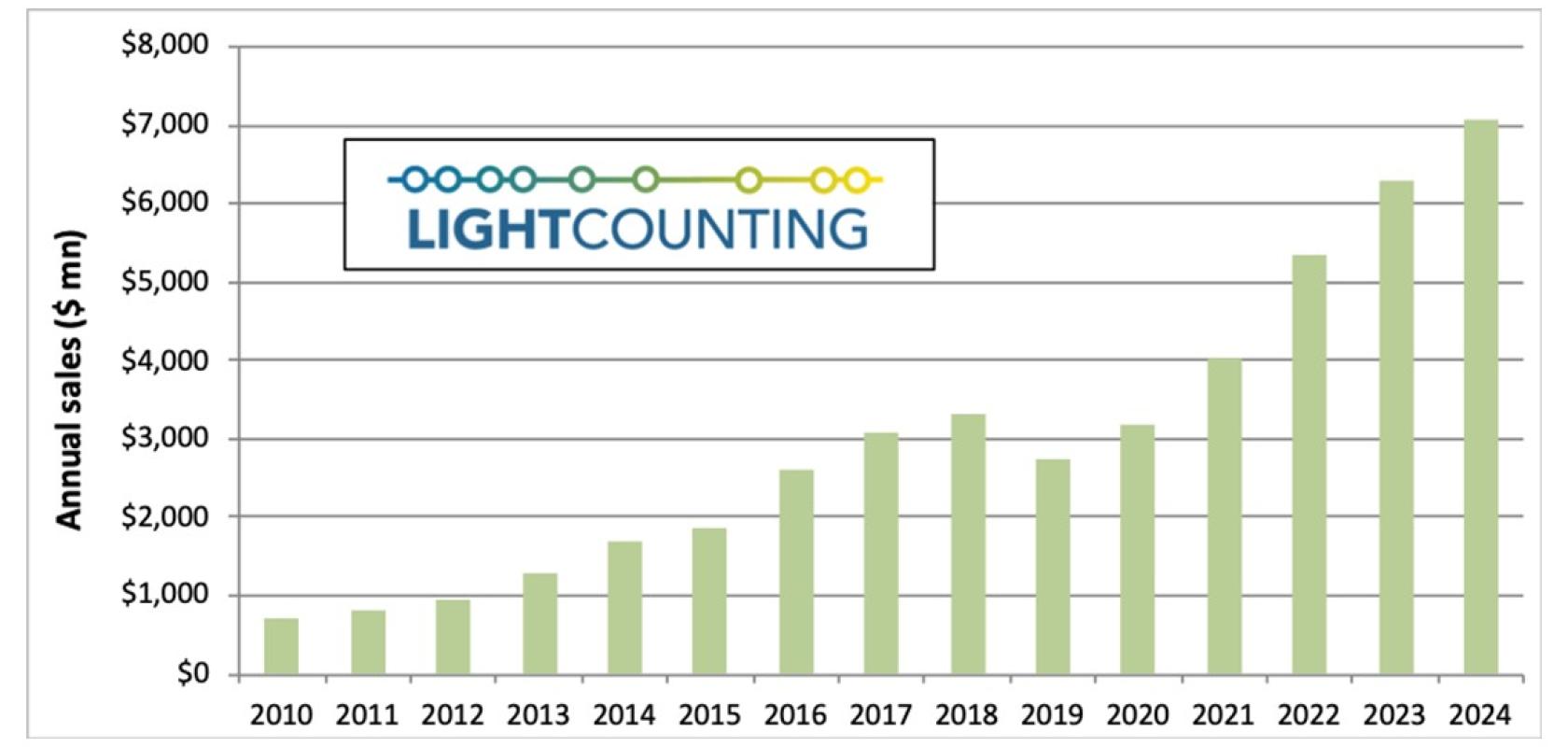Specialist market research firm LightCounting has released its latest High-Speed Ethernet Optics report. Amongst its findings, the report revealed that the market for Ethernet optical transceivers is expected to decline by 18 per cent this year. This is thought to be the steepest decline in the recorded history of this market.
The report is designed to offer a comprehensive forecast with more than 50 product categories, including 10GbE, 25GbE, 40GbE, 50GbE, 100GbE, 200GbE, 2x200GbE and 400GbE transceivers, sorted by reach and form factors. It provides a summary of technical challenges faced by high-speed transceiver suppliers, including a review of the latest products and technologies introduced by leading suppliers. This iteration cited the previous market decline in 2009 as 4 per cent, and said that there is no reliable data on the decline during the telecom market crash of 2002-2003. However, that decline was not as steep for Ethernet products as others, as they were not widely used in telecom applications at that point.
According to the latest report, the period from 2004 to 2018 saw global sales of Ethernet optical transceivers increase by 16 per cent CAGR, including a five-year streak of 27 per cent CAGR in 2012-2017. This growth streak was driven by deployments of optics in mega data centres, and began with Google deploying 10GbE transceivers in 2007-2008 and gained scale in 2012-2017 with the adoption of 40GbE and 100GbE transceivers. LightCounting’s analysis suggests that this market segment will post a 22 per cent CAGR in 2019-2024, after a reset in 2019, driven by sales of next-generation products and continuing demand for 100GbE optics, as shown in the figure below.
The report found that there are a number of factors that contributed to a slowdown in the market growth last year and a decline in 2019, including a longer transition than expected to next-generation products; new lows for 100GbE prices in Q1 of this year and reset expectations for the pricing of the next-generation products; and a slowdown in cloud spending on optics deployed inside mega data centres.
There is also the economic uncertainty caused by relations between China and the US to consider. The LightCounting report said that this has already impacted the economy in China, resulting in Chinese cloud companies lowering their spend on high-speed optics. Meanwhile, more conservative infrastructure spending of US-based vendors also aligns to the uncertain macro-economic situation.


